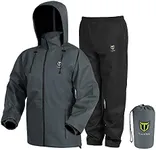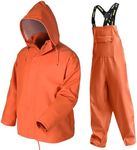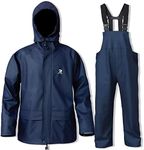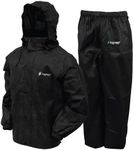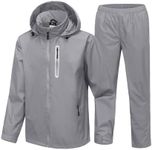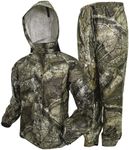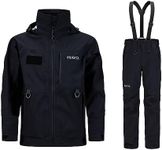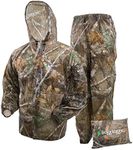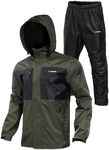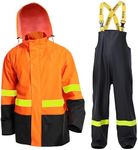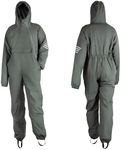Buying Guide for the Best Fishing Suit
Choosing the right fishing suit is all about matching your clothing to the conditions you'll face on the water. A good fishing suit keeps you comfortable, dry, and protected from the elements, whether you're fishing in cold, wet, or windy weather. Before you buy, think about where and when you'll be fishing most often, and what kind of weather you expect. The right suit will help you focus on fishing, not on being too cold, wet, or uncomfortable.MaterialThe material of a fishing suit determines how well it protects you from water, wind, and cold. Common materials include nylon, polyester, and sometimes rubberized fabrics. Some suits have breathable membranes to let sweat escape while keeping water out. If you fish in wet or rainy conditions, look for waterproof materials. For cold weather, insulated materials are important. If you fish in mild climates, lighter, breathable fabrics may be more comfortable. Think about the typical weather where you fish to decide which material is best for you.
WaterproofingWaterproofing is how well the suit keeps water out. This is crucial if you fish in rain, snow, or splashy conditions. Some suits are fully waterproof, while others are only water-resistant, meaning they can handle light rain but not heavy downpours. Waterproof suits often have sealed seams and special coatings. If you expect to be out in heavy rain or wading in water, choose a fully waterproof suit. For occasional light rain, water-resistant may be enough.
InsulationInsulation refers to how well the suit keeps you warm. Some fishing suits are designed for cold weather and have thick insulation, while others are uninsulated for use in warmer conditions. If you fish in winter or cold climates, look for a suit with good insulation. If you fish in summer or warm areas, a lighter, uninsulated suit will keep you from overheating. Your comfort depends on matching the insulation level to the temperatures you'll face.
BreathabilityBreathability is how well the suit lets sweat and moisture escape from inside. A breathable suit helps you stay dry and comfortable, especially if you move around a lot or fish in warmer weather. Some suits have special membranes or vents to improve breathability. If you tend to get hot or fish in mild to warm weather, prioritize breathability. In very cold conditions, breathability is less important than warmth and waterproofing.
Fit and MobilityFit and mobility describe how the suit feels and moves with your body. A good fishing suit should allow you to cast, bend, and move freely without feeling tight or restrictive. Some suits have adjustable cuffs, waists, or articulated knees for better movement. Try on different sizes or look for suits with features that match your body shape and the way you fish. If you need to layer clothing underneath, consider a slightly looser fit.
Pockets and FeaturesPockets and extra features can make a fishing suit more convenient. Look for suits with enough pockets to hold your tools, lures, or snacks. Some have waterproof pockets, D-rings for gear, or reinforced areas for durability. Think about what you like to carry and how you fish—if you need quick access to gear, more pockets and features will be helpful. If you prefer to travel light, a simpler suit may be better.
Layering CompatibilityLayering compatibility means how well the suit works with other clothing layers. In changing weather, you might want to add or remove layers for comfort. Some fishing suits are designed as outer shells to be worn over base layers, while others have built-in insulation. If you fish in variable conditions, choose a suit that allows easy layering underneath. If you always fish in similar weather, a single-layer suit may be enough.

